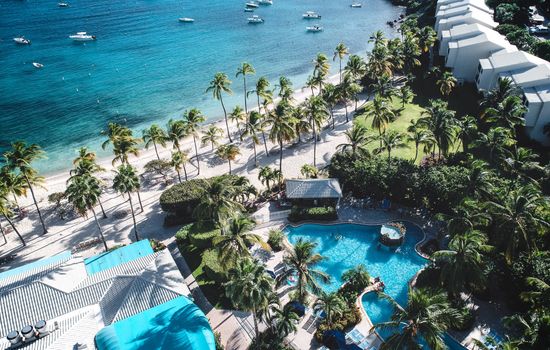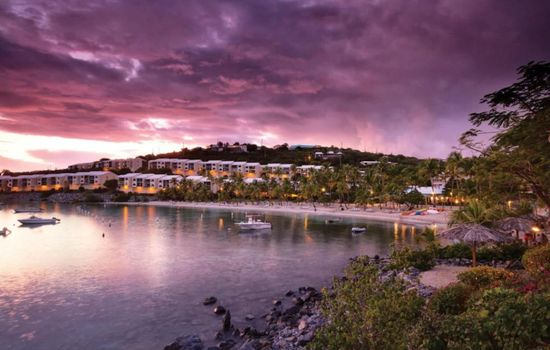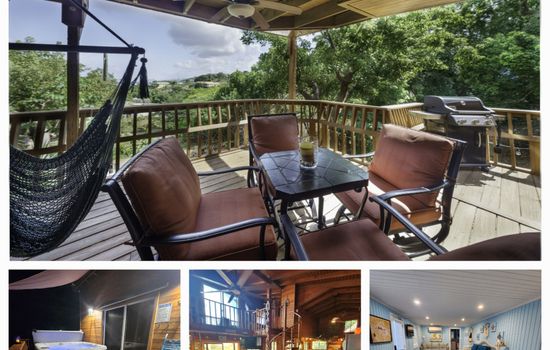The visitor center at Salt River Bay National Historical Park and Ecological Preserve is currently closed indefinitely due to damage from Hurricanes Irma and Maria.
There is no entrance fee at Salt River Bay National Historical Park and Ecological Preserve. Admission is free.
From Christiansted, take Rt. 75 to Rt. 80, a scenic route that unwinds through tropical landscapes, leading you to a historical and ecological gem on St. Croix.
Parking is available in designated lots near the Salt River Bay Visitor Contact Station. No specific size restrictions for RVs are mentioned, but parking is generally limited to park roads and designated areas. Overnight parking is not permitted. There are no mentioned parking fees. Motorcycles can park in the same designated areas as cars.
Accessibility & permits
Emergency
- Cell service availability:None
Information not accurate?
Help us improve by making a suggestion.
Salt River Bay National Historical Park and Ecological Preserve on St. Croix, U.S. Virgin Islands, is a tapestry of natural and historical splendor. This 1,015-acre park, jointly managed by the National Park Service and the Government of the U.S. Virgin Islands, encapsulates the essence of the Caribbean’s rich past and vibrant ecosystem.
The bay, fed by the intermittent Salt River, is a sanctuary of mangrove forests, coral reefs, and a dramatic submarine canyon. The mangroves, among the largest remaining in the Virgin Islands, provide a nurturing habitat for numerous young fish and shellfish, while the coral reefs teem with life, including nurse sharks, reef sharks, and occasional visits from dolphins. In the winter months, humpback whales migrate through the area, their haunting melodies echoing through the waters.
For scuba divers, the Salt River Canyon is a must-explore, with its sheer walls plunging nearly 500 feet into the ocean’s depths. The clarity of the water, rated among the top in the Caribbean, makes this dive site particularly enchanting.
On land, the park is dotted with prehistoric and colonial-era archaeological sites and ruins, telling the story of every major period of human habitation in the Virgin Islands. The area’s dynamic ecosystem supports over 27 species listed as rare, threatened, or endangered.
Visitors can immerse themselves in the park’s unique character through guided tours and seasonal events. While there are no hiking trails in the traditional sense, explorers can take ranger-led boat tours to explore the bay’s ecological wonders. Nearby, the charming town of Christiansted offers a blend of historical architecture, artisan shops, and fine dining experiences.
For those seeking a deeper connection with the locale, local outfitters provide kayak and paddleboard rentals to navigate the tranquil waters of the bay. As the sun sets over Salt River Bay, the sky transforms into a kaleidoscope of colors, a perfect backdrop for an unforgettable Caribbean adventure.
- Area (mi²)
- 1.6
- Annual visitors
- 4 884
- Established year
- 1992
Top 3 Facts about Salt River Bay National Historical Park and Ecological Preserve
Salt River Bay is home to a bioluminescent bay, one of only seven year-round lagoons in the Caribbean, where the dinoflagellate Pyrodinium bahamense creates glowing water. The bay’s salinity ranges from 33 to 36 parts per thousand, dropping to 29 ppt during heavy rain periods.
In this Caribbean haven, mangrove forests thrive, supporting a vibrant ecosystem. Wading birds like the Black-crowned Night Heron and Yellow-crowned Night Heron flourish alongside Brown Pelicans and Ospreys. The waters are home to an array of fish and crustaceans, while the shoreline hosts small mammals and a variety of insects. The unique blend of historical significance and natural beauty makes this a compelling destination for those seeking an immersive experience in a rich and diverse environment.
In the heart of the U.S. Virgin Islands, a vibrant ecosystem thrives, characterized by vast mangrove forests, coral reefs, and a submarine canyon. Here, turquoise waters lap against the shores, supporting a diverse array of threatened and endangered species, all within a dynamic, tropical landscape. The area is home to some of the largest remaining mangrove forests in the Virgin Islands, a testament to its untouched natural beauty.
Family programs
- Junior Ranger
- Ranger-led Tours
- Workshops & Hands-on Activities
- Living History & Cultural Demons
- Scavenger Hunts
- Arts & Crafts
- Water-based Adventures
Travel Tips
Plan Ahead
Plan a few days in late spring to avoid summer heat and catch the Full Moon Kayak Tour. Arrive early, park near the visitor center, and prepare for rocky trails and limited dining options. Bring water, snacks, and rest often.
Pack Appropriately
Pack layers for variable weather, sturdy hiking shoes, and insect repellent. Bring a waterproof jacket, sunblock, and a day pack for essentials. For longer stays, include camping gear and a personal first aid kit. Check the season for specific needs.
Respect Wildlife
Respect the habitat by keeping pets leashed and obeying signs to protect nesting birds and sea turtles. Avoid disturbing coral reefs and seagrass beds, especially during breeding seasons. Be mindful of dry conditions and avoid littering to preserve the unique flora and fauna.
Stay Informed
Stay on marked trails, avoid ledges and water edges, and check weather conditions. Follow park signs and rules. For emergencies, call 911 or park authorities at 340-773-1460. Stay informed, stay safe.
Seasons
In spring, warmer temperatures (70s-80s°F) and calm waters make it ideal for kayaking through mangroves and witnessing bioluminescence. Time your visit for the full moon to see the spectacular mating of marine worms, a seasonal highlight.
Summer in the USVI brings warm temperatures (85-90°F) and gentle rains. Explore protected waters ideal for snorkeling, kayaking, and scuba diving. Don’t miss the July 4th weekend celebrations or the Rockin’ Rodeo in July for a unique blend of adventure and cultural experience. Perfect for outdoor enthusiasts seeking a vibrant summer getaway.
Visit in fall, from September to November, when temperatures range from 78 to 88°F. Enjoy mild weather and avoid the full moon for optimal bioluminescence viewing. No specific annual events, but kayak tours and historical hikes are ideal during this season.
Winter, from December to February, offers ideal conditions with temperatures ranging from 76°F to 84°F. Dry and mild weather makes it perfect for exploring ancient sites, mangrove forests, and coral reefs, immersing you in a rich cultural and natural heritage.
Information not accurate?
Help us improve by making a suggestion.
Where to stay
Frequently Asked Questions
Ready to dive into what Salt River Bay National Historical Park and Ecological Preserve has to offer? Let’s tackle some of the burning questions you might have as you plan your visit!
-
The closest city to the park is Christiansted, which is located on the island of St. Croix in the U.S. Virgin Islands. Christiansted is a historic town that has been a significant settlement since the 18th century.
-
The most scenic hiking trail is along the eastern shore, which takes you through a mangrove forest and to the top of the Cape of Arrows, offering stunning coastal views and historical significance related to the 1493 skirmish. This trail is part of the unofficial and unmarked paths that require navigating through the residential community of Judith’s Fancy. Guided walking tours are recommended for the best experience.
-
Dogs are allowed in certain areas but must be kept on a leash at all times to protect wildlife. They are permitted in parking areas, along paved roads, campgrounds, and picnic areas. However, dogs are not allowed on Buck Island or in other restricted areas.
-
Parking can be challenging to find, as some visitors have reported driving in and unable to locate available parking spots. There is no specific information on parking for camper vans, trailers, or motorhomes. General parking availability is limited.
-
Salt River Bay was a site of early European colonization and native resistance. In 1493, members of Christopher Columbus’s second voyage landed here, leading to the first documented armed resistance by Amerindians to European colonization. The area was later contested by European powers, including the English, Dutch, French, and the Knights of Malta, who established settlements and fortifications, such as Fort Salé, which was first constructed in 1641.







